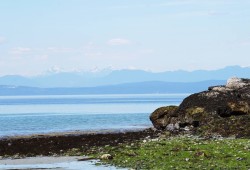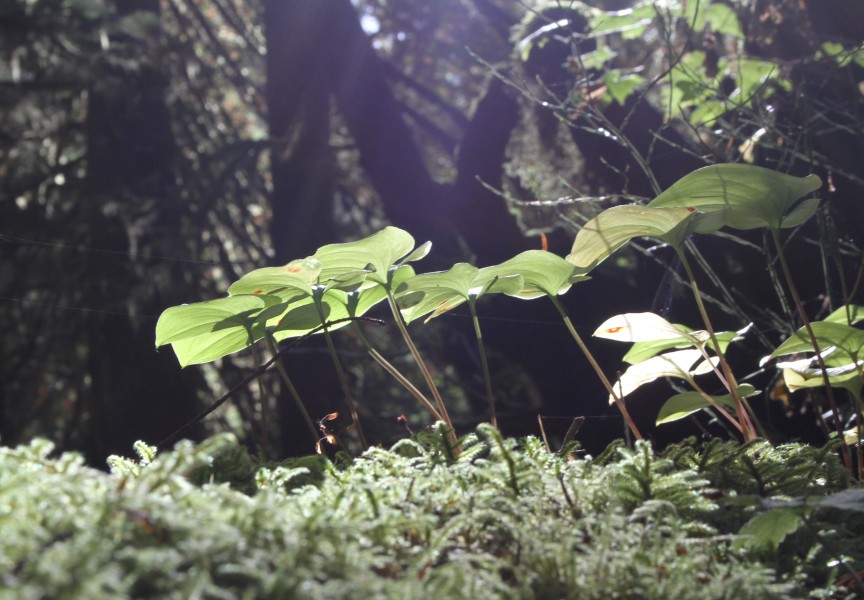A team of researchers from the University of Victoria (UVic) and the Bamfield Marine Sciences Centre are working closely with coastal First Nations in attempts to regrow kelp forests.
The kelp restoration project is supported by a $3.68 million research grant from Fisheries and Oceans Canada under the Aquatic Ecosystems Restoration Fund. Now in the second year of a four-year project, researchers are growing kelp in nurseries at Bamfield. They are testing different kelp culturing and planting methods for B.C.'s two species of canopy-forming kelp—giant and bull kelp—in coastal waters and are measuring their hardiness in different conditions.
Kelp forests support coastal biodiversity, draw down atmospheric carbon and improve water quality. But ocean warming has placed the cold water-loving ecosystems in jeopardy.
Researchers have planted kelp in different locations in Barkley Sound, where the Bamfield Marine Sciences Centre is located and off Hornby Island, including Baynes Sound and Ford’s Cove, in the Salish Sea. They’re studying different species’ varying rates of growth, tolerance for different temperatures, the sizes of biomass and even their hold-fasts, which secure plants to rocks.
“I like to think of kelp forests as the coral reef of colder oceans, so they’re sort of one of the most critical habitats for shallow coastal critters,” said Dr. Jasmin Schuster, program manager of the kelp rescue initiative with the Bamfield Marine Sciences Centre. “They support the whole food chain, even critters that don’t eat kelp themselves. They’re also really prolific oxygen producers.”
Schuster said B.C.’s coastal waters have seen about a 90 – 95 per cent decrease in canopy-forming kelp, which varies slightly by region, due to increasing temperatures and sea urchins overeating the plants.
The goal of the researchers is to develop a roadmap to recovery for kelp forests being destroyed by ocean heat waves and over-grazing by sea urchins, and to develop the science for kelp reforestation at large scales.
“We’re running several experiments this year in Barkley Sound and the north Salish Sea…over the next couple of years it’s all about scaling up,” said Schuster, who hopes to restore kelp at a larger scale each year. “We’re focused specifically on the two species of canopy formers that we have on this coastline.”
Giant and bull kelp grow on the seafloor all the way to the ocean’s surface.
“When you’re out on a boat you can see them floating off the water. The individual kelps can grow maybe 30 metres tall in some cases but certainly well over 10 metres,” Schuster said.
Schuster added they’re working with the Huu-ay-aht First Nations on this project and are in the process of organizing a cultural harvest to remove some sea urchins from the area.
According to a news release from UVic, work done by the project’s First Nations liaison, Connie Crocker, has been vital to building relationships with First Nations to integrate knowledge, needs and capacity about kelp restoration and its importance to their cultures and ongoing needs.
“The roadmap to kelp recovery is through awareness. It’s all about awareness—there’s strength in numbers. We need the public behind us,” Crocker said in the release. “A lot of people are concerned about climate change and the state of our oceans. It’s urgent and the ocean is in peril. If only people knew about kelp decline, we could make some headway.”
Additional research will include a partnership with Vancouver Island University at the Deep Bay Marine Field Station on Vancouver Island’s east coast, and the team is in the process of installing two new nurseries at Bamfield. It’s also developing a kelp “glue” so when researchers are “out-planting,” new kelp aren’t washed away.
“It is very ambitious, but the urgency of this problem drives us to commit to these large goals,” said Sean Rogers, Bamfield Marine Sciences Centre director. “Even if the project does not achieve reforestation in four years, it will advance knowledge of how to do so, through rigorous scientific trials, and in doing so produce a framework—the formula that is currently lacking—for recovery.”








